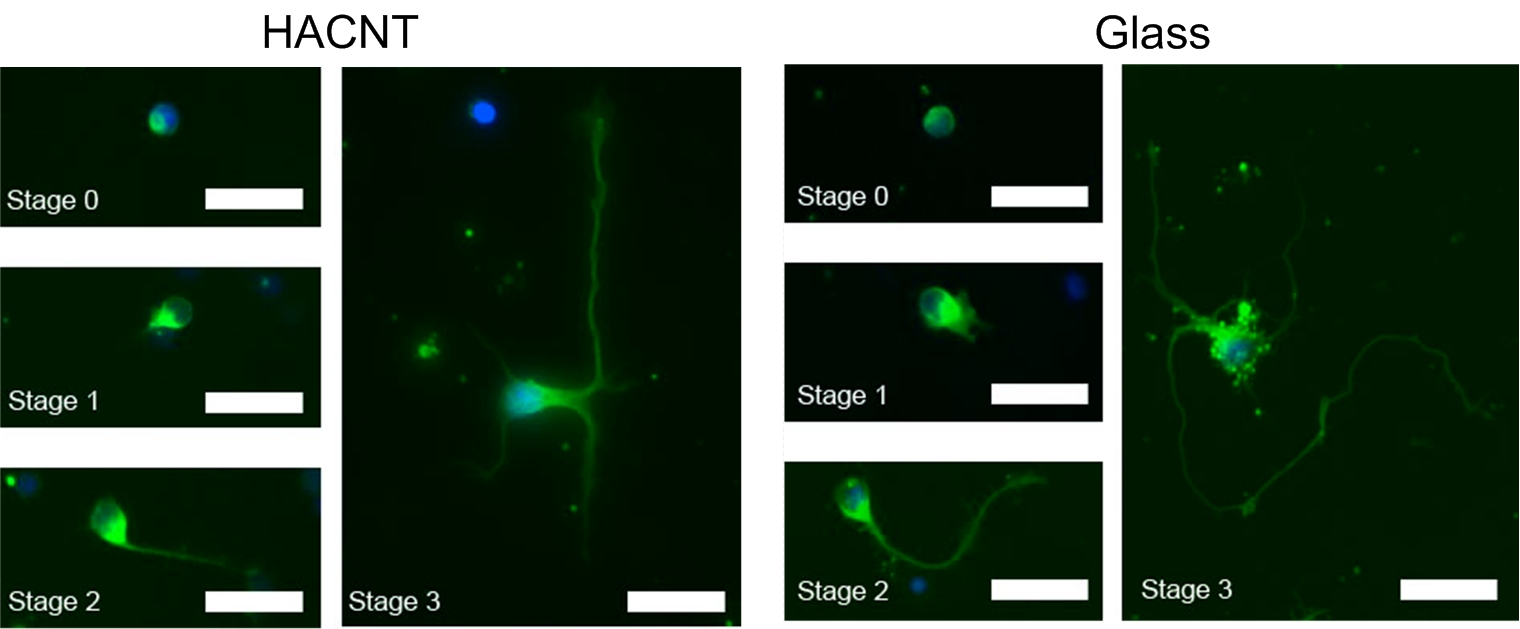
Year
2014Volume
11Issue
3Pages
036013Abstract
Objective. Carbon nanotubes (CNTs) are attractive for use in peripheral nerve interfaces because of their unique combination of strength, flexibility, electrical conductivity and nanoscale surface texture. Here we investigated the growth of motor neurons on thin films of horizontally aligned CNTs (HACNTs). Approach. We cultured primary embryonic rat motor neurons on HACNTs and performed statistical analysis of the length and orientation of neurites. We next presented motor neurons with substrates of alternating stripes of HACNTs and SiO2. Main results. The neurons survived on HACNT substrates for up to eight days, which was the full duration of our experiments. Statistical analysis of the length and orientation of neurites indicated that the longest neurites on HACNTs tended to align with the CNT direction, although the average neurite length was similar between HACNTs and glass control substrates. We observed that when motor neurons were presented with alternating stripes of HACNTs and SiO2, the proportion of neurons on HACNTs increases over time, suggesting that neurons selectively migrate toward and adhere to the HACNT surface. Significance. The behavior of motor neurons on CNTs has not been previously investigated, and we show that aligned CNTs could provide a viable interface material to motor neurons. Combined with emerging techniques to build complex hierarchical structures of CNTs, our results suggest that organised CNTs could be incorporated into nerve grafts that use physical and electrical cues to guide regenerating axons.






